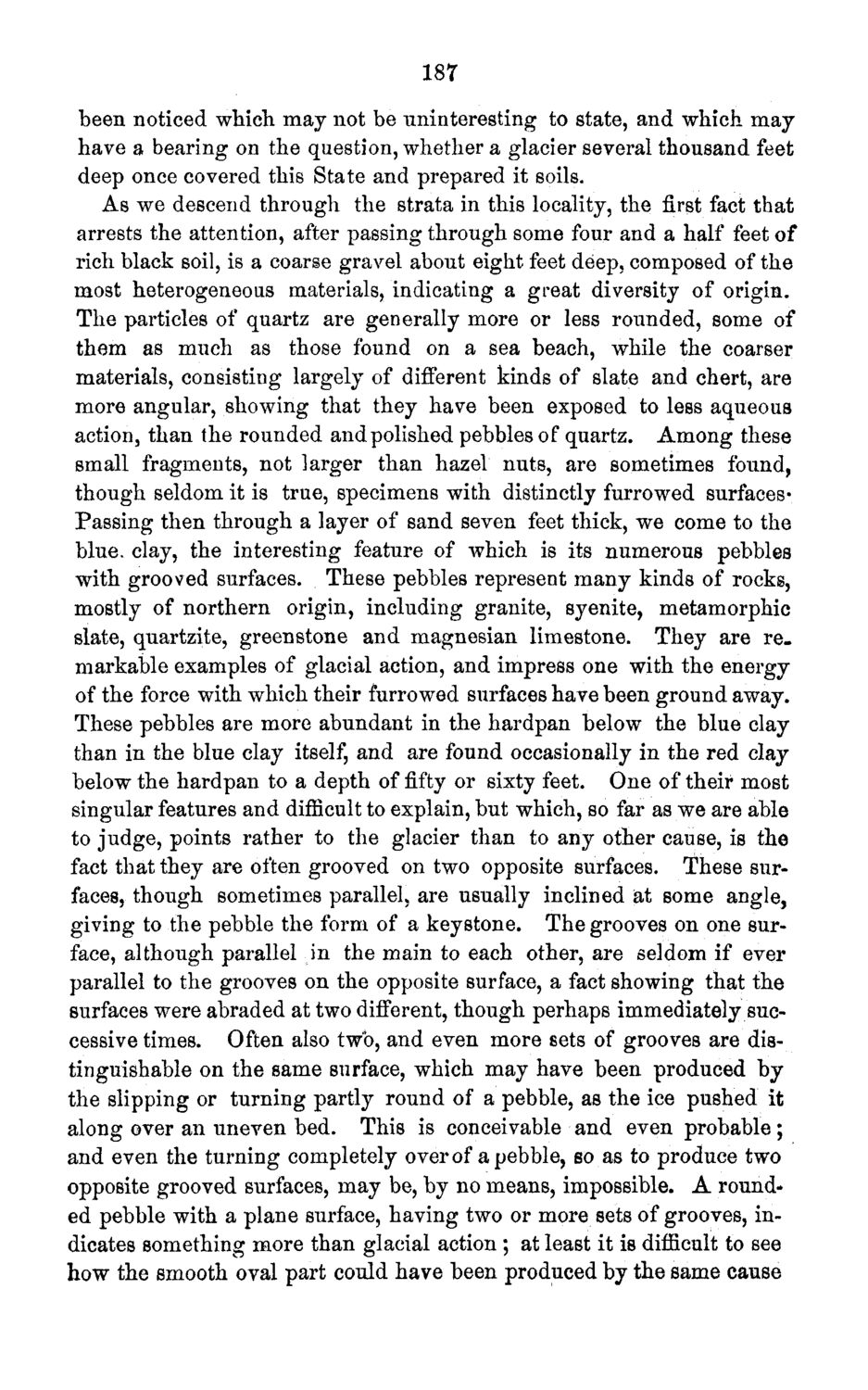| |
| |
Caption: Board of Trustees Minutes - 1871
This is a reduced-resolution page image for fast online browsing.

EXTRACTED TEXT FROM PAGE:
187 been noticed which may not be uninteresting to state, and which may have a bearing on the question, whether a glacier several thousand feet deep once covered this State and prepared it soils. As we descend through the strata in this locality, the first fact that arrests the attention, after passing through some four and a half feet of rich black soil, is a coarse gravel about eight feet deep, composed of the most heterogeneous materials, indicating a great diversity of origin. The particles of quartz are generally more or less rounded, some of them as much as those found on a sea beach, while the coarser materials, consisting largely of different kinds of slate and chert, are more angular, showing that they have been exposed to less aqueous action, than the rounded and polished pebbles of quartz. Among these small fragments, not larger than hazel nuts, are sometimes found, though seldom it is true, specimens with distinctly furrowed surfacesPassing then through a layer of sand seven feet thick, we come to the blue, clay, the interesting feature of which is its numerous pebbles with grooved surfaces. These pebbles represent many kinds of rocks, mostly of northern origin, including granite, syenite, metamorphic slate, quartzite, greenstone and magnesian limestone. They are remarkable examples of glacial action, and impress one with the energy of the force with which their furrowed surfaces have been ground away. These pebbles are more abundant in the hardpan below the blue clay than in the blue clay itself, and are found occasionally in the red clay below the hardpan to a depth of fifty or sixty feet. One of their most singular features and difficult to explain, but which, so far as we are able to judge, points rather to the glacier than to any other cause, is the fact that they are often grooved on two opposite surfaces. These surfaces, though sometimes parallel, are usually inclined at some angle, giving to the pebble the form of a keystone. The grooves on one surface, although parallel in the main to each other, are seldom if ever parallel to the grooves on the opposite surface, a fact showing that the surfaces were abraded at two different, though perhaps immediately successive times. Often also two, and even more sets of grooves are distinguishable on the same surface, which may have been produced by the slipping or turning partly round of a pebble, as the ice pushed it along over an uneven bed. This is conceivable and even probable; and even the turning completely over of a pebble, so as to produce two opposite grooved surfaces, may be, by no means, impossible. A rounded pebble with a plane surface, having two or more sets of grooves, indicates something more than glacial action ; at least it is difficult to see how the smooth oval part could have been produced by the same cause
| |